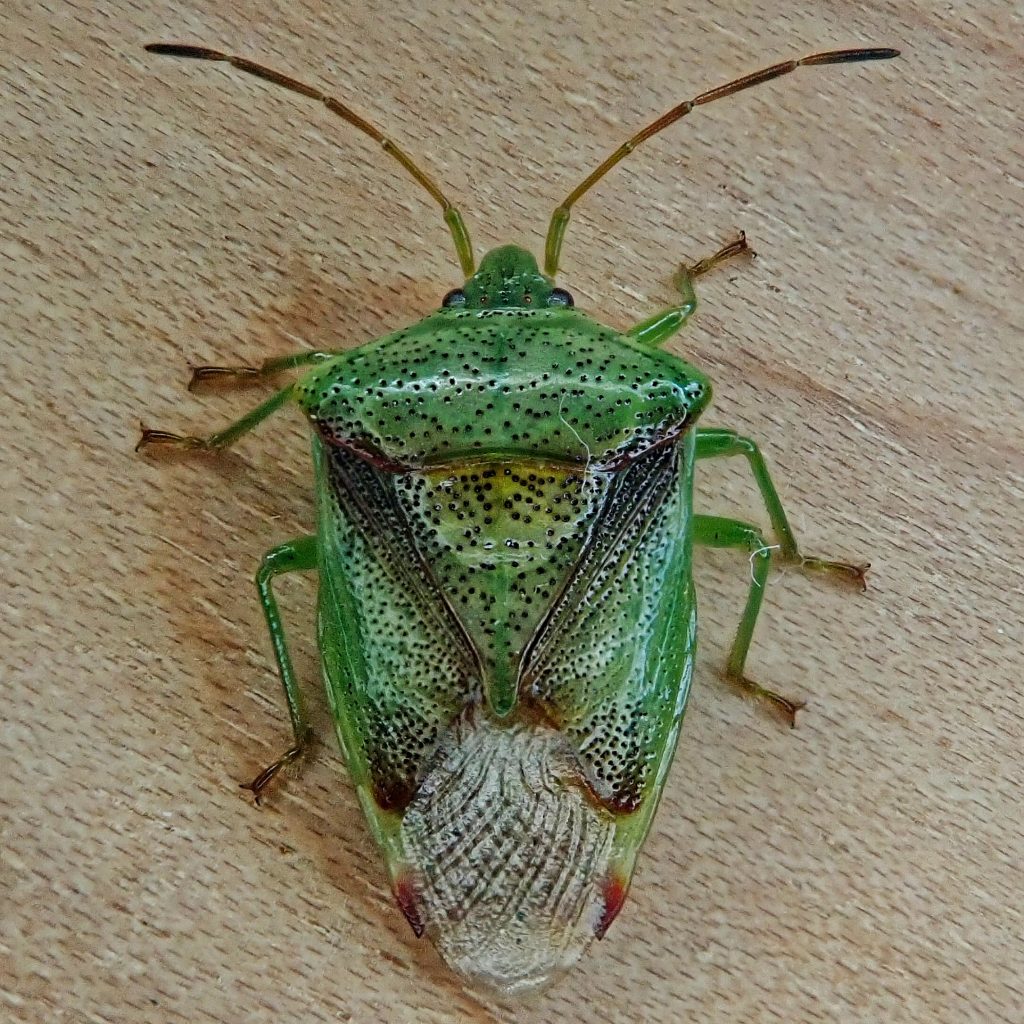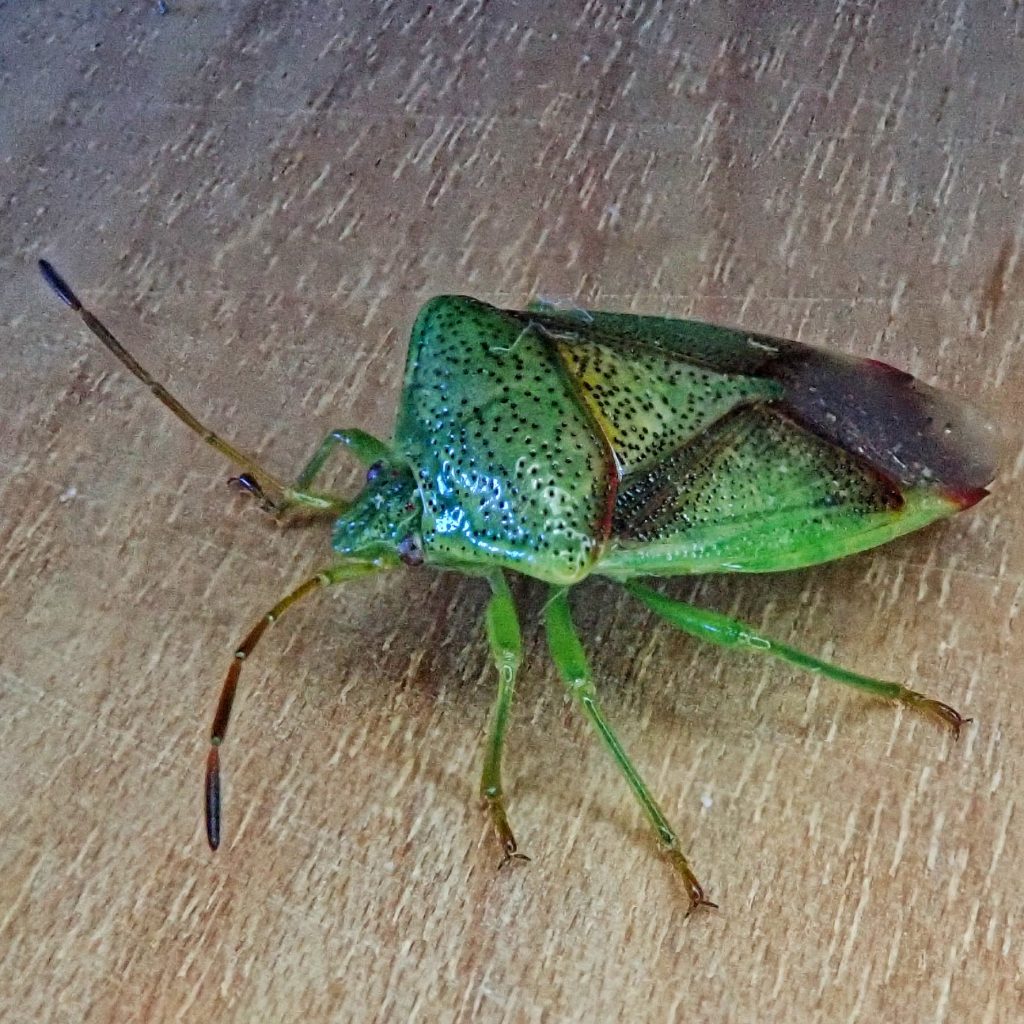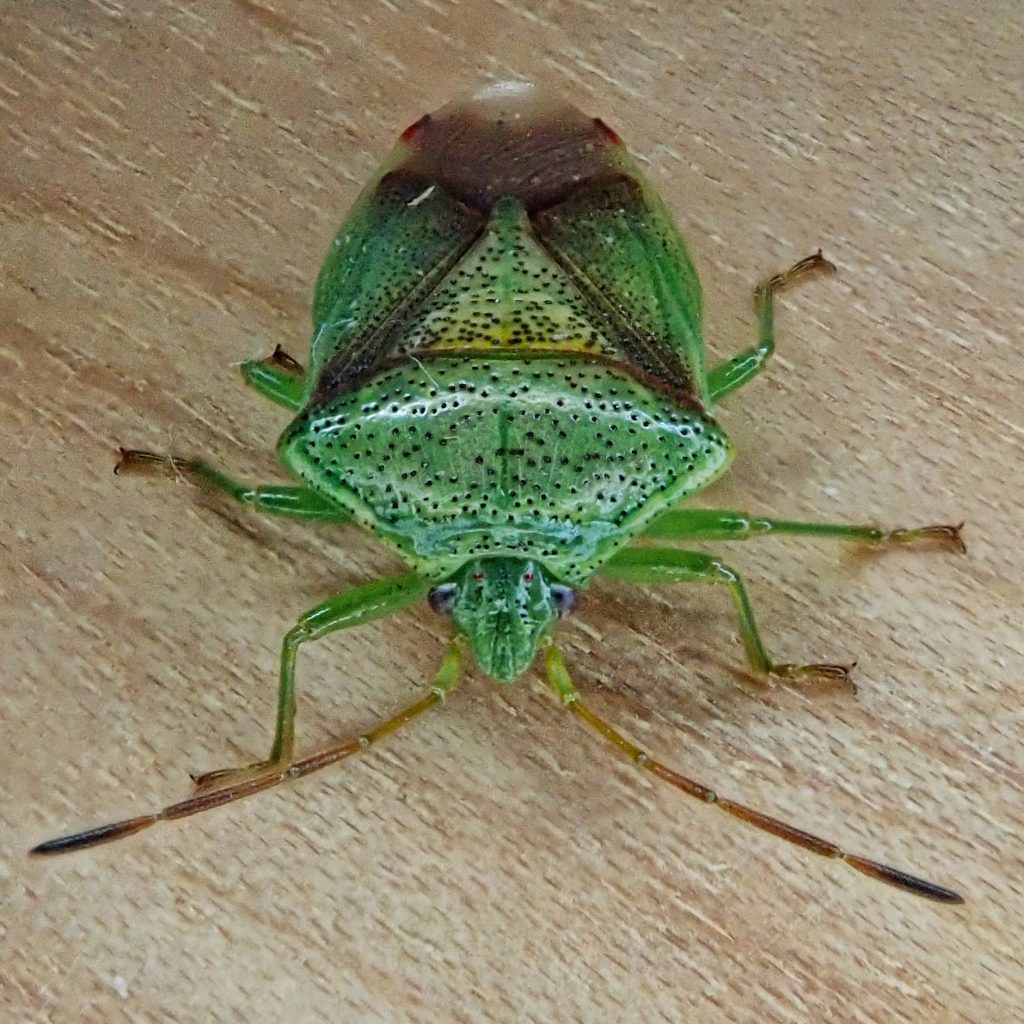
Though Elasmostethus cruciatus looks like a stink bug (Pentatomidae) and emits pungent gas as a defense mechanism like a stink bug, it is not, in fact, a stink bug. It is a shield bug (Acanthosomatidae). Which is still confusing because the habitus (overall body) of stink bugs is also shield shaped like shield bugs (although some resources state that the shield in question is actually the scutellum, or the combination of scutellum and pronotum, or even that it’s not the shape but the mere protective quality of those plates. Regardless, both families have a similar plate with a similar shape). To further confuse or maybe illuminate the subject, Acanthosomatidae used to be a subfamily of Pentatomidae. But stink bugs have three segments in their tarsi rather than the two segmented tarsi of shield bugs, and shield bugs have a keel projecting from the middle of the ventral side of the thorax. Behaviorally there is another big difference. Shield bugs are also called parent bugs because most species engage in maternal protection of the eggs and early instar nymphs, while most stink bugs do not. And, just to bring this semantic circle all the way around, Acanthosomatidae and Pentatomidae are both in the superfamily Pentatomoidea, which is usually designated as ‘the stink bugs’. So, if you call a shield bug a stink bug, I promise not to call the nomenclature police on you.

Anyway, on less confusing and synonymous ground… Red-cross Shield Bugs are yellow to green, with many black punctures on the scutellum and pronotum, pointed ‘shoulders’ on the pronotum, and a reddish orange X (the eponymous cross and cruciatus) in the middle of the back. The membrane of the wing tips is frequently also reddish orange, and the antennae are yellow to orange and darkening towards the tips.
Their preferred larval host is Red Alder (Alnus rubra), although nymphs and adults have been found on Thimbleberry (Rubus parviflorus) and other Rubus spp. They can be found region wide except for the most arid parts of the interior. Adults are active year around, although less so in mid winter. Elasmostethus cruciatus is a native to our area, and is not considered to be a pest species.

https://bugguide.net/node/view/14010
https://www.insectidentification.org/insect-description.asp?identification=Red-Cross-Shield-Bug
Size- 8-11mm
Habitat- Usually in or near wooded areas
Range- Region wide except for the most arid interior. Native
Eats- Prefers alder, and may consume Rubus spp
Flight Season- Adults may be found year around
Really impressive shields! 🙂
I am loving your photos and info on the class of insects, which I only recently learned is the class with by far the greatest number of species. I learned this at an interesting talk by an entomologist, Jerry Freilich, at the Audubon Society in Bend, Oregon. His talk was entitled “Biodiversity Begins with Bee”, and a number of the birders were upset that he wasn’t going to talk about birds! He posted a hilarious response to their protests, and his talk was not only informative but humorous too.
Bugs are amazing! And when there are no birds about one can almost always at least find insects. That’s why I got interested in them.
Just found it in large numbers on horsetails. Now … there were alders in the vicinity so I wonder if they were knocked out of them onto the horsetails … or is the horsetail another host species?
My Pentatomidae resource only list Alnus spp. as larval hosts, so my guess is that they were dispersed from the alders. Cool find!